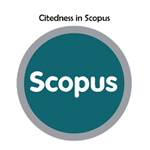Potensi Antibakteri Ekstrak Batang Gaharu (Gyrinops versteegii) terhadap Bakteri Escherichia coli dan Staphylococcus aureus
Abstract
Keywords
Full Text:
PDFReferences
Abdul, R.W., Dzun, H.I. 2019. Daya Hambat Bakteri Staphylococcus aureus Ekstrak Daun Gaharu (Aquilaria malea L.) sebagai Antibakteri. Mataram : Univesitas Muhammadiyah Mataram.
Agung, G., Nengah, I., Kerta, dan Hapsari. 2013. Daya Hambat Perasan Daun Sirsak terhadap Pertumbuhan Bakteri Escherichia coli. Denpasar : Universitas Udayana.
Ajizah, A. 2004. Sensitivitas (Salmonella typhymurium) terhadap Ekstrak Daun Psidium guajava L. Bioscientoae Volume 1, Nomor 1, Halaman 31-38.
Candrasari A., M. Amin Romas, Masna H, Ovi R. A. 2012. Uji daya Antimikroba Ekstrak Etanol Daun Sirih Merah (Piper crocatum Ruiz & Pav.) terhadap Pertumbuhan Staphylococcus aureus ATCC 6538, Escherichia coli ATCC 11229 dan Candida albican ATCC 10231 secara In Vitro. Biomedik, Volume 4 Nomor 1. Surakarta : Universitas Muhammadiyah Surakarta.
Depkes RI, 2000. Parameter Standar Umum Ekstrak Tumbuhan Obat Edisi I. Direktorat Jenderal Pengawasan Obat dan Makanan. Direktorat Pengawasan Obat Tradisional: Jakarta
Hapsari, Endah. 2015. Uji Anti Bakteri Ekstrak Herba Meniran (Phyllanthus niruri) terhadap Pertumbuhan Bakteri Bacillus cereus dan Escherichia coli. Skripsi, Pendidikan Biologi Universitas Sanata Dharma : Yogyakarta
Hesti, D.S., Cahyo, S. 2014. Gaharu. Jakarta : Penebar Swadaya.
Hijrul, F. 2017. Uji Aktivitas Antioksidan Daun dan Kulit Batang Avicennia marina dengan Metode DPPH (1,1-difenil-2-pikrihidrazil). Malang : Universitas Brawijaya.
Junairiah, Sukarti, M. 2013. Identifikasi Golongan Senyawa Antimikroba pada Lumut Hati (Dumortiera hirsuta Nees.) dan Perbanyakannya dengan Kultur Jaringan. Yogyakarta : Universitas Gadjah Mada.
Kawiji M.P., Windi A., Agung A.N. 2010. Kajian Kadar Kurkuminoid, Total Fenol dan Aktivitas Antioksidan Oleoresin Temulawak (Curcuma xanthorrhiza Roxb) dengan Variasi Teknik Pengeringan dan Warna Kain Penutup. Surakarta : Universitas Sebelas Maret.
Qorisa, Y. and Ningsih, I. 2016. Peran Ekstrak Daun Suren (Toona sureni (Blume) Merr.) sebagai Antibakteri terhadap Methicillin-Resistant Staphylococcus aureus (MRSA). Faskultas Kedokterran UI, pp. 1-19.
Shendi S.., Riska P. 2017. Aktivitas Antimikroba dan Antioksidan Ekstrak Etanol Akar dan Ranting Gaharu (Aquilaria moluccensis Oken.) Garut : Fakultas MIPA Universitas Garut.
Suerni E., Alwi, M., M. Guli M. 2013. Uji Daya Hambat Ekstrak Buah Nanas (Ananas comosus L. Merr), Salak (Salacca edulis Reinw.) dan Mangga (Mangifera odorta Griff.) Terhadap Daya Hambat Staphylococcus aureus. ISSN : 1978-6417. Jurnal Biocelebes, Vol 7 No.1, Juni 2013 hal 35-47.
Sulaiman, A. Y., P. Astuti, dan A. D. P. Shita. 2017. Uji Antibakteri Ekstrak Daun Kersen (Muntingia Calabura L .) Terhadap Koloni Streptococcus viridians. Indonesian Journal for Health Sciences. 1(2), pp. 1-7.
Wibowo R.M., Haryadi, Wahyudi, Agnesia E.T. 2008. Studi Patogenisitas Eschericia coli Isolat Unggas pada Ayam Pedaging Umur 15 Hari. Jurnal Veteriner, Vol.9 No.2, pp. 87-93.
DOI: https://doi.org/10.37311/ijpe.v4i2.26754
Refbacks
- There are currently no refbacks.
Copyright (c) Mahdalena Sy. Pakaya, M.Si.,Apt

Indonesian Journal of Pharmaceutical Education is licensed under a Creative Commons Attribution-NonCommercial-ShareAlike 4.0 International License.



